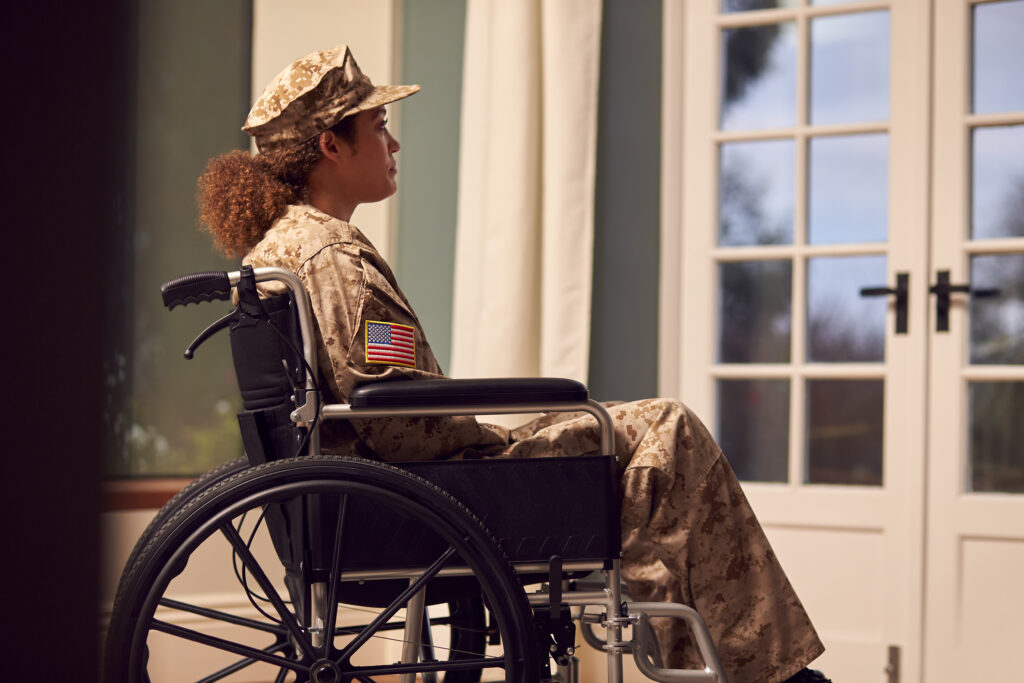
Big Consulting Firms and Data Profiteering
Here’s the uncomfortable truth: many hospitals and state Medicaid plans, under pressure from HR1 data analysis needs, are paying eye-watering markups to for-profit CPA and

Jan. 30, 2019 is CTE Awareness Day.
It has been four years since we started the Patrick Risha CTE (chronic traumatic encephalopathy) Awareness Foundation at stopcte.org.
My son, Patrick Risha, was a great high-school football running back and free safety. He started playing at age 10 and over time broke many rushing and scoring records that remain unbroken to this day.
Football earned Patrick a ticket to Dartmouth, his Ivy League dream. Sadly, the glory football brought him eventually cost him his life. Patrick received enough sub-concussive impacts to his head to set the stage for the development of CTE in his brain. Over the next 10 years we watched a beautiful mind deteriorate and become unwired, transporting Patrick to an increasingly dark place in his life, where the only real option for him was to leave it all behind. He left us at the age of 32.
Sadly, Patrick’s story isn’t an isolated incident. Far from it. In Patrick’s name, we created the foundation shortly after his suicide.
And in our third year commemorating CTE Awareness Day, we reflect on those lost to CTE and how to help those still suffering with the disease – and, most importantly, how to stop the disease.
Research and science are moving at a fast pace to solve this problem, which may impact many millions of athletes, military veterans, and domestic abuse victims.
Here are 10 of the major developments concerning CTE in the past year.
As a foundation, we kicked off our “Safe Sports = No Brainer” campaign, and we have free sport headbands for anyone interested in distributing them at health fairs, athletic camps, and schools. Kids love them. We also started our billboard campaign, “Contact Sports Will Change Your Child’s Brain,” to reach larger audiences.
In January of last year, 60 Minutes did a great expose on how most of our military are at risk for CTE due to ordnance training and blast exposures.
Researchers also discovered the link from repetitive brain traumas to CTE, and now amyotrophic lateral sclerosis (ALS), also known as Lou Gehrig’s Disease. Science is showing that these diseases are making the same tau deposits together in the brain, and may coexist.
This past year, five states tried unsuccessfully to stop tackle football for children. Hopefully, this new year will show some success on that front.
Researchers from the VA Boston Healthcare System and Boston University School of Medicine published a study in April that found 190 of 202 former football players had CTE. That group included 66 players who didn’t play professionally, with 57 (86 percent) showing evidence of CTE. Also, 147 college football programs had at least one former player diagnosed with this degenerative brain disease.
In April, the Centers for Disease Control and Prevention (CDC) finally listed CTE as a disease on its website and came out with two new fact sheets, one for general information and one for healthcare providers.
In June, a landmark settlement was reached that could set the stage for future cases against the NCAA involving head injuries that cause CTE. The NCAA folded mid-trial and settled out of court.
This past year, researchers and lawmakers made tremendous strides on opening up the possibility of medical marijuana as a treatment for those suffering with CTE and other brain diseases. It has proven to be a life-saver for many former athletes and veterans for whom traditional pharmaceuticals just don’t work. Research is still needed, but the ball is rolling in the right direction. Marijuana’s ability to reduce inflammation, pain, and anxiety, help those with sleep disorders and Parkinson’s disease, among many other ailments, is giving hope to many families.
In November, researchers revealed a link between the total number of years of contact sports played to an increased risk of having Lewy Body Disease (LBD) in the cortex of the brain. Those who played more than eight years of contact sports had the greatest risk of LBD, which was six times more prevalent than among those who played eight years or less. Clinically, athletes with both CTE and LBD were significantly more likely to have dementia and the symptoms of Parkinson’s disease than those with CTE pathology alone.
There were many suicides of young football players last year. Some were buried without autopsies, and some were discovered to have CTE. Please remember that we do our best to provide free autopsies of the brain for any contact sport athlete or veteran. This helps give families the forensic truth they deserve and aids in research to prevent this tragedy in others.
The 24/7 voicemail/pager number is 617-992-0615.
And finally, a new book will be available on Amazon on CTE Awareness Day, featuring Patrick’s story and 13 other stories of brave men lost to CTE, including Justin Strzelczyk, Junior Seau, Grant Feasel, Ryan Hoffman, Mike Jenkins, Greg Ploetz, Joseph Chernach, Paul Pender, Paul Bright, Zack Langston, Patrick Grange, Tyler Cornell, and Cody Hamblin). Titled “Brain Damaged: Two-Minute Warning for Parents,” the book is about real-life sport families who paid the ultimate price. Help us fight CTE by buying this book and seeing the impact CTE makes on lives and families.
As the new year begins, we still have deniers and detractors concerning CTE, doing their best to obfuscate the problem and protect the current sport culture. Science has proven that the earth is not flat – and that our brains are fragile and need to be protected.
Reference:
CDC Fact Sheet: https://www.cdc.gov/traumaticbraininjury/pdf/CDC-CTE-ProvidersFactSheet-508.pdf


Here’s the uncomfortable truth: many hospitals and state Medicaid plans, under pressure from HR1 data analysis needs, are paying eye-watering markups to for-profit CPA and

Today is Veterans Day, so first I would like to thank those who have served or are currently serving in the military for their service
Please log in to your account to comment on this article.

Accurately determining the principal diagnosis is critical for compliant billing, appropriate reimbursement, and valid quality reporting — yet it remains one of the most subjective and error-prone areas in inpatient coding. In this expert-led session, Cheryl Ericson, RN, MS, CCDS, CDIP, demystifies the complexities of principal diagnosis assignment, bridging the gap between coding rules and clinical reality. Learn how to strengthen your organization’s coding accuracy, reduce denials, and ensure your documentation supports true medical necessity.

Denials continue to delay reimbursement, increase administrative burden, and threaten financial stability across healthcare organizations. This essential webcast tackles the root causes—rising payer scrutiny, fragmented workflows, inconsistent documentation, and underused analytics—and offers proven, data-driven strategies to prevent and overturn denials. Attendees will gain practical tools to strengthen documentation and coding accuracy, engage clinicians effectively, and leverage predictive analytics and AI to identify risks before they impact revenue. Through real-world case examples and actionable guidance, this session empowers coding, CDI, and revenue cycle professionals to shift from reactive appeals to proactive denial prevention and revenue protection.

Sepsis remains one of the most frequently denied and contested diagnoses, creating costly revenue loss and compliance risks. In this webcast, Angela Comfort, DBA, MBA, RHIA, CDIP, CCS, CCS-P, provides practical, real-world strategies to align documentation with coding guidelines, reconcile Sepsis-2 and Sepsis-3 definitions, and apply compliant queries. You’ll learn how to identify and address documentation gaps, strengthen provider engagement, and defend diagnoses against payer scrutiny—equipping you to protect reimbursement, improve SOI/ROM capture, and reduce audit vulnerability in this high-risk area.

Only ICD10monitor delivers what you need: updates on must-know changes associated with the FY26 IPPS, including new ICD-10-CM/PCS codes, CCs/MCCs, and MS-DRGs, plus insights, analysis and answers to your questions from two of the country’s most respected subject matter experts.

Get clear, practical answers to Medicare’s most confusing regulations. Join Dr. Ronald Hirsch as he breaks down real-world compliance challenges and shares guidance your team can apply right away.

Federal auditors are zeroing in on Inpatient Rehabilitation Facility (IRF) and hospital rehab unit services, with OIG and CERT audits leading to millions in penalties—often due to documentation and administrative errors, not quality of care. Join compliance expert Michael Calahan, PA, MBA, to learn the five clinical “pillars” of IRF-PPS admissions, key documentation requirements, and real-life case lessons to help protect your revenue.

During this essential RACmonitor webcast Michael Calahan, PA, MBA Certified Compliance Officer, will clarify the rules, dispel common misconceptions, and equip you with practical strategies to code, document, and bill high-risk split/shared, incident-to & critical care E/M services with confidence. Don’t let audit risks or revenue losses catch your organization off guard — learn exactly what federal auditors are looking for and how to ensure your documentation and reporting stand up to scrutiny.

Learn how to navigate the proposed elimination of the Inpatient-Only list. Gain strategies to assess admission status, avoid denials, protect compliance, and address impacts across Medicare and non-Medicare payors. Essential insights for hospitals.
Prepare for the 2025 CMS IPPS Final Rule with ICD10monitor’s IPPSPalooza! Click HERE to learn more
Get 15% OFF on all educational webcasts at ICD10monitor with code JULYFOURTH24 until July 4, 2024—start learning today!
CYBER WEEK IS HERE! Don’t miss your chance to get 20% off now until Dec. 2 with code CYBER24